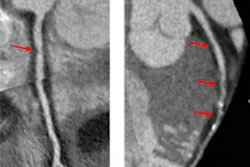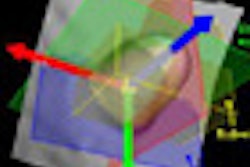ATLANTA - When doctors looked at the coronary CT angiography (CTA) studies of elite marathoners they found something quite unexpected -- more calcified and noncalcified plaque volume than in symptomatic patients, according to research presented at the American College of Cardiology (ACC) meeting.
The long-distance runners -- individuals who had completed at least one marathon race a year for at least 25 years -- had favorable body mass indexes, heart rates, and lipid profiles, "but these may be counterbalanced by metabolic and mechanical factors that enhance coronary plaque growth," suggested Dr. Jonathan Schwartz, a resident at the University of Colorado Health Science Center in Denver.
"You have to consider that these runners may be in a constant state of inflammation and that may be why we are seeing more plaque," said senior author Dr. Robert Schwartz, the medical director of the Minneapolis Heart Institute Foundation in Minnesota, and father of the lead author.
The researchers started looking into elite runners following studies that found calcification in coronary arteries using electron-beam CT.
"We sent letters to elite runners who we identified as having completed at least one marathon race in each of the last 25 years," the elder Schwartz said. "All the runners we contacted agreed to be in the study."
The researchers also identified a control group of 23 men who were undergoing coronary CTA for clinical reasons, typically for elevated risk factors or abnormal/inconclusive stress testing.
The participants underwent coronary CTA with a 64-slice scanner, and the two groups were compared for blood pressure, heart rate, and serum lipids. Images were analyzed using commercial plaque characterization software (Vitrea, Vital Images, Minnetonka, MN) for calcified and noncalcified plaque and calcium scores.
In the control patients, the calcium plaque volume was 169 mm3 compared with 274 mm3 for the elite runners (p = 0.028). The runners also had higher calcium scores and higher noncalcified plaque volume, although those differences did not reach statistical significance.
Exactly what to make of the results remains controversial. "More subjects are under study for clarification of these results," Schwartz said.
"I'm not sure you can make much from these data," said Dr. Maria Rosa Costanzo, a spokesperson for the American Heart Association and medical director of the Edward Hospital Center for Advanced Heart Failure inNaperville, IL. She said the number of participants in the study was small, and the research did not track clinical outcomes.
By Edward Susman
AuntMinnie.com contributing writer
March 17, 2010
Related Reading
Calcium findings on abdominal CT linked to heart attack risk, March 15, 2010
Normal coronary artery calcium score is reliable for several years, March 12, 2010
Does coronary calcification accurately predict occlusion? Experts disagree, February 19, 2010
Zero calcium score enough to send chest pain patients home, February 10, 2010
Copyright © 2010 AuntMinnie.com




















